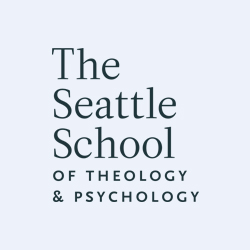We asked Dr. Celene Lillie and Dr. Misty Anne Winzenried, Associate Dean and Teaching & Learning to talk with us about The Seattle School’s first large-scale, fully online course: A New Testament Survey and how the students embraced creativity in their final visual projects. Keep reading to watch a project from the course, where students engaged John 11 and the story of Lazarus.
How did The Seattle School’s first fully online course get developed?
Dr. Misty Anne Winzenried: In Winter 2020, even before we were aware of how the COVID-19 pandemic would shift us into the realm of remote teaching and learning, The Seattle School launched our first large-scale, fully online course, BTI 504: Tell Me the Stories of Jesus: A New Testament Survey with professor Dr. Celene Lillie.. We were already recognizing the value of and need to pilot online courses and the advantages to students were clear including increased flexibility to their schedule, reduced commute time, and our ability to bring in scholars from outside of the Seattle area to interact with our students. Last year, Dr. Celene Lillie worked collaboratively with us to design a course that would showcase her expertise in New Testament scholarship and engage students in an interactive, contextualized, and reflective learning experience from a distance.
When we made the decision to finish our Winter term coursework online due to COVID-19, Dr. Lillie’s students were already practiced at engaging one another and learning in an online environment. And because the course’s final project was a video assignment, students could share their work more easily with one another and with broader audiences.
What questions guide your engagement with the New Testament scriptures and what did you hope your students would explore?
Dr. Celene Lillie: How do we interpret the Bible responsibly? It is this question more than any other that guides my work, whether in church, classroom, or research. But this question is always coupled with a second: How does the biblical text meet the calls and cries of my life, the communities of which I am a part and those I interact with, and the larger world? These questions might be wed by asking: Who and what is my interpretation responsible to?
When we began The Seattle School’s first online introduction to New Testament class in January of 2020 (and, oh, that seems like lifetimes and worlds ago), these were the questions that shaped and held the class. My hope was in asking questions about how the Christian Testament intersected with the ancient world, our own lives and faith journeys, our communities, and the wider world (and where responsible interpretation falls at the nexus of these) we could begin to create a sense of trust and community—despite the newness of and sometimes resistance to the online container.
One of the places I hoped the class would explore, and maybe even begin to find, was their unique interpretational voices through the group exegetical project. This project was designed to use the nodes of responsible interpretation (personal experience, ancient context, community engagement and accountability) to creatively explore a passage of the group’s choosing. Due on the cusp of national quarantine in March, I didn’t know what the future held for the projects—but their reality exceeded my wildest expectations.
What lingers with you from the student’s final video projects?
Dr. Celene Lillie: From serious to humorous, academic to artistic, the creativity, thoughtfulness, and care with which students engaged their work together was deeply moving. I wish I had the capacity to share all of their projects with you, but the two here will give you a taste. In the months that have passed, I have often thought about these projects and drawn hope and inspiration from them. I also find myself wondering what might emerge from this creative space now: in the ways we are facing death and grief together; in the ways so much of the world has risen up to shine a light on inequity—particularly in the lives of our Black siblings; in the ways we continue to lean on our sacred texts to make meaning and sense of our complex world; and how we use these sacred words as inspiration and hope to bring into being Jesus’s vision of the kin-dom.
Visual Exegetical Projects
Raising Lazarus: John 11
Created by Rileigh Murray and Michael Forrester


